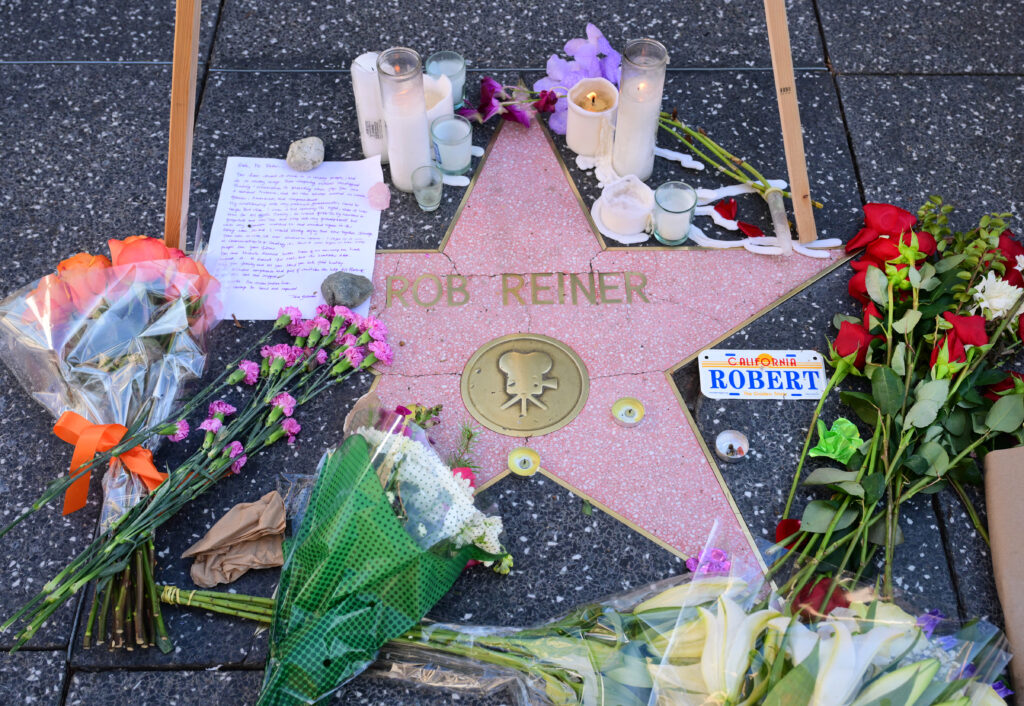Vers une consommation record de charbon en 2025, avant un début de déclin
La consommation mondiale de charbon devrait dépasser de peu son record en 2025, en partie grâce à des mesures politiques de l’administration Trump, mais devrait commencer à baisser d’ici 2030, sous l’effet de l’essor d’autres sources d’électricité, selon l’Agence internationale de l’énergie (AIE).La demande mondiale de charbon en 2025 devrait augmenter légèrement, d’environ 0,5%, comparé à 2024, déjà une année record, pour ressortir à 8,85 milliards de tonnes, selon un rapport annuel publié mercredi par l’AIE consacré au charbon, le principal contributeur aux émissions de CO2 d’origine humaine.Après le sommet atteint l’an dernier, 2025 s’achemine vers un “nouveau record historique” pour la consommation de charbon, a indiqué Keisuke Sadamori, directeur des marchés de l’énergie à l’AIE, lors d’une présentation à la presse. Une année 2025 qui s’annonce aussi comme la deuxième année la plus chaude jamais enregistrée, à égalité avec 2023 et derrière 2024, selon l’observatoire européen Copernicus. Toutefois, la demande globale de charbon a “atteint un plateau”, autrement dit elle tend à se stabiliser, précise l’AIE qui projette, comme prévu, que “d’ici 2030”, elle “devrait légèrement diminuer, revenant au niveau de 2023″, sous l’effet d'”une concurrence croissante avec d’autres sources d’électricité”.”Avec l’envolée des capacités renouvelables, l’expansion régulière du nucléaire et l’arrivée sur le marché d’une énorme vague de gaz naturel liquéfié”, la production d’électricité à partir de charbon, qui représente les deux tiers de la consommation totale de ce combustible, “devrait reculer à partir de 2026” tandis que la demande pour les processus industriels “devrait rester plus résiliente”, indique l’AIE.Partout dans le monde, la part du charbon continue de s’étioler dans la production électrique: “en 2013, elle était de 41%, et en 2025 nous nous attendons à ce qu’elle soit autour de 34%, le niveau le plus bas de l’histoire statistique de l’AIE”, souligne M. Sadamori.”Pour les marchés mondiaux du charbon, l’ère de la croissance touche à sa fin, et les investisseurs devraient en prendre note”, a commenté Christine Shearer, pour le centre de réflexion Global Energy Monitor.- Plus forte hausse aux Etats-Unis -La Chine, plus gros consommateur de charbon tout en étant le champion des énergies éoliennes et solaires, reste la locomotive du marché, engloutissant à elle seule 56% de la demande mondiale. Comme attendu, la consommation y est restée stable en 2025, par rapport à 2024. Mais dans d’autres grands marchés, les trajectoires de consommation observées en 2025 ont contrasté avec les tendances récentes, selon l’AIE.C’est le cas en Inde, moteur de la croissance du marché ces dernières années, où une mousson intense et précoce a entraîné un recul de la demande de charbon pour la 3e fois en 50 ans. Au contraire, aux Etats-Unis, la hausse des prix du gaz et des politiques pro-énergies fossiles du gouvernement américain du président Donald Trump ralentissant la fermeture des centrales à charbon, ont soutenu la consommation, qui déclinait depuis 15 ans. A eux seuls, les Etats-Unis contribuent pour 37 millions de tonnes à l’augmentation globale de la consommation de 40 millions en un an.Quant à l’Union européenne, la demande de charbon n’y a reculé que de 3%, après une baisse moyenne de 18% en 2023 et 2024, principalement en raison d’une faible production hydroélectrique et éolienne au 1er semestre. “Malgré des évolutions atypiques (…), notre prévision pour les années à venir n’a pas changé de façon substantielle par rapport à 2024: nous anticipons une stabilisation de la demande mondiale de charbon avant une légère baisse d’ici 2030”, a résumé Keisuke Sadamori, dans un communiqué.L’Inde devrait enregistrer la plus forte hausse en valeur absolue de la consommation de charbon d’ici 2030, soit une hausse totale de plus de 200 millions de tonnes, l’Asie du Sud-Est enregistrant elle la croissance la plus rapide: plus de 4% par an.Toutefois, l’AIE met en garde sur les “nombreuses incertitudes (qui) pèsent sur les perspectives du charbon, notamment en Chine”. Au-delà de l’influence des conditions météorologiques, “si l’intégration de nouvelles capacités renouvelables dans les systèmes électriques progresse plus lentement qu’anticipé, la demande mondiale de charbon pourrait dépasser nos prévisions”.
Vers une consommation record de charbon en 2025, avant un début de déclin
La consommation mondiale de charbon devrait dépasser de peu son record en 2025, en partie grâce à des mesures politiques de l’administration Trump, mais devrait commencer à baisser d’ici 2030, sous l’effet de l’essor d’autres sources d’électricité, selon l’Agence internationale de l’énergie (AIE).La demande mondiale de charbon en 2025 devrait augmenter légèrement, d’environ 0,5%, comparé à 2024, déjà une année record, pour ressortir à 8,85 milliards de tonnes, selon un rapport annuel publié mercredi par l’AIE consacré au charbon, le principal contributeur aux émissions de CO2 d’origine humaine.Après le sommet atteint l’an dernier, 2025 s’achemine vers un “nouveau record historique” pour la consommation de charbon, a indiqué Keisuke Sadamori, directeur des marchés de l’énergie à l’AIE, lors d’une présentation à la presse. Une année 2025 qui s’annonce aussi comme la deuxième année la plus chaude jamais enregistrée, à égalité avec 2023 et derrière 2024, selon l’observatoire européen Copernicus. Toutefois, la demande globale de charbon a “atteint un plateau”, autrement dit elle tend à se stabiliser, précise l’AIE qui projette, comme prévu, que “d’ici 2030”, elle “devrait légèrement diminuer, revenant au niveau de 2023″, sous l’effet d'”une concurrence croissante avec d’autres sources d’électricité”.”Avec l’envolée des capacités renouvelables, l’expansion régulière du nucléaire et l’arrivée sur le marché d’une énorme vague de gaz naturel liquéfié”, la production d’électricité à partir de charbon, qui représente les deux tiers de la consommation totale de ce combustible, “devrait reculer à partir de 2026” tandis que la demande pour les processus industriels “devrait rester plus résiliente”, indique l’AIE.Partout dans le monde, la part du charbon continue de s’étioler dans la production électrique: “en 2013, elle était de 41%, et en 2025 nous nous attendons à ce qu’elle soit autour de 34%, le niveau le plus bas de l’histoire statistique de l’AIE”, souligne M. Sadamori.”Pour les marchés mondiaux du charbon, l’ère de la croissance touche à sa fin, et les investisseurs devraient en prendre note”, a commenté Christine Shearer, pour le centre de réflexion Global Energy Monitor.- Plus forte hausse aux Etats-Unis -La Chine, plus gros consommateur de charbon tout en étant le champion des énergies éoliennes et solaires, reste la locomotive du marché, engloutissant à elle seule 56% de la demande mondiale. Comme attendu, la consommation y est restée stable en 2025, par rapport à 2024. Mais dans d’autres grands marchés, les trajectoires de consommation observées en 2025 ont contrasté avec les tendances récentes, selon l’AIE.C’est le cas en Inde, moteur de la croissance du marché ces dernières années, où une mousson intense et précoce a entraîné un recul de la demande de charbon pour la 3e fois en 50 ans. Au contraire, aux Etats-Unis, la hausse des prix du gaz et des politiques pro-énergies fossiles du gouvernement américain du président Donald Trump ralentissant la fermeture des centrales à charbon, ont soutenu la consommation, qui déclinait depuis 15 ans. A eux seuls, les Etats-Unis contribuent pour 37 millions de tonnes à l’augmentation globale de la consommation de 40 millions en un an.Quant à l’Union européenne, la demande de charbon n’y a reculé que de 3%, après une baisse moyenne de 18% en 2023 et 2024, principalement en raison d’une faible production hydroélectrique et éolienne au 1er semestre. “Malgré des évolutions atypiques (…), notre prévision pour les années à venir n’a pas changé de façon substantielle par rapport à 2024: nous anticipons une stabilisation de la demande mondiale de charbon avant une légère baisse d’ici 2030”, a résumé Keisuke Sadamori, dans un communiqué.L’Inde devrait enregistrer la plus forte hausse en valeur absolue de la consommation de charbon d’ici 2030, soit une hausse totale de plus de 200 millions de tonnes, l’Asie du Sud-Est enregistrant elle la croissance la plus rapide: plus de 4% par an.Toutefois, l’AIE met en garde sur les “nombreuses incertitudes (qui) pèsent sur les perspectives du charbon, notamment en Chine”. Au-delà de l’influence des conditions météorologiques, “si l’intégration de nouvelles capacités renouvelables dans les systèmes électriques progresse plus lentement qu’anticipé, la demande mondiale de charbon pourrait dépasser nos prévisions”.
Le fils du cinéaste Rob Reiner inculpé pour l’assassinat de ses parents
Le fils du cinéaste américain Rob Reiner a été inculpé pour l’assassinat de ses parents retrouvés morts dimanche dans leur luxueux domicile de Los Angeles, a annoncé mardi le procureur de la ville, Nathan Hochman.Nick Reiner, 32 ans, qui a des antécédents d’addictions remontant à l’adolescence, risque la peine de mort s’il est reconnu coupable, a souligné M. Hochman, précisant dans un communiqué avoir procédé à l’inculpation mardi.Celle-ci porte sur “deux chefs de meurtre au premier degré”, la plus haute qualification, équivalant à celle d’assassinat (meurtre avec préméditation), avait-il détaillé plus tôt.Le fait que les meurtres sont “multiples” pèse comme une circonstance aggravante, selon le magistrat.”Il fait également l’objet d’une accusation particulière pour avoir personnellement utilisé une arme dangereuse et mortelle, à savoir un couteau. Ces chefs sont passibles d’une peine maximale d’emprisonnement à perpétuité sans possibilité de libération conditionnelle, ou de la peine de mort”, a indiqué le procureur.Rob Reiner, auteur entre autres du film “Quand Harry rencontre Sally”, a été découvert mort dimanche au côté de son épouse, la photographe Michele Singer, dans leur maison de Brentwood, un quartier huppé de la métropole californienne.Leur fils a été interpellé dans la soirée de dimanche et placé en détention.L’inculpation lui sera formellement notifiée dès qu’il sera en état de comparaître pour ce double meurtre, dont le mobile reste à ce stade inconnu. Il a été déclaré médicalement inapte à comparaître mardi.”Chaque détenu doit obtenir une autorisation médicale avant de pouvoir être transféré”, a expliqué à la presse son avocat, Alan Jackson. “Les services du shérif évalueront la situation au jour le jour.”Selon les médias américain, Rob Reiner, 78 ans, et son épouse de 68 ans ont été poignardés à plusieurs reprises.La veille des meurtres, Nick Reiner avait perturbé une fête de fin d’année où il était invité avec ses parents, selon NBC News.- Violente dispute -Nick Reiner y “a mis mal à l’aise les autres invités” en raison de son comportement. “Les parents de Reiner étaient bouleversés et gênés par le comportement de leur fils et s’inquiétaient pour sa santé”, a rapporté un témoin cité par NBC News.Selon le New York Times, “Rob et Nick Reiner se sont disputés violemment”.Nick, un des trois enfants du couple (Rob Reiner avait un autre enfant issu d’un premier mariage), vivait de façon intermittente chez ses parents. Il évoquait ouvertement son expérience en matière de traitement de la toxicomanie, qu’il avait contractée à l’âge de 15 ans.Dans un podcast, il affirmait avoir suivi 18 cures de désintoxication durant son adolescence.Nick Reiner racontait aussi des anecdotes sur son comportement instable. Une fois, a-t-il raconté en 2018 dans un autre podcast, après avoir passé des jours sans dormir sous l’effet de la cocaïne, il s’était mis à “frapper tout ce qui lui tombait sous la main” chez ses parents. Il s’est aussi parfois retrouvé à la rue ou dans des refuges.C’est en s’inspirant de sa propre expérience qu’il avait coécrit un film réalisé par son père, “Being Charlie” (2015), qui raconte le difficile rétablissement d’un fils de célébrités ravagé par les drogues.Cinéaste éclectique et citoyen engagé, Rob Reiner a eu une longue carrière à Hollywood, comme acteur et réalisateur.De la comédie romantique – “Quand Harry rencontre Sally” – au thriller terrifiant – “Misery”, adapté d’un roman de Stephen King – en passant par le récit initiatique – “Stand by me” qui a révélé River Phoenix -, Rob Reiner a essayé tous les genres, souvent avec succès.En marge de ses activités à Hollywood, Rob Reiner était un militant de gauche, proche des démocrates. Il défendait le droit au mariage pour tous et était un critique virulent du gouvernement de Donald Trump.Lundi, le président américain a attribué le meurtre du cinéaste à son anti-trumpisme “enragé”, un message qui a outré jusque dans le camp conservateur.
Coupe intercontinentale: au Qatar, le PSG en route vers de nouvelles conquêtes
Le Paris SG retrouve le Qatar pour la finale de la Coupe intercontinentale contre Flamengo mercredi près de Doha (18h00), l’opportunité de continuer à capitaliser sur son titre de champion d’Europe et préparer comme à domicile la seconde moitié de saison.Le PSG ne demande rien tant que de retrouver l’allégresse de la première moitié de 2025, quand son niveau de jeu atteignait les sommets pour défaire l’Inter Milan en finale de Ligue des champions (5-0), et quand les blessures n’existaient pas. Quoi de mieux qu’une finale internationale pour se remettre d’aplomb, oublier les pépins physiques à répétition du début de l’exercice actuel et se lancer vers la reconquête ?Si cette finale est coincée entre un match de Ligue 1 samedi à Metz (victoire 3-2) et un 32e de finale de Coupe de France samedi prochain contre Vendée Fontenay, le timing n’est pas si mauvais pour la gestion de l’effectif.Le Ballon d’Or Ousmane Dembélé pourrait commencer vraiment sa saison avec plusieurs mois de blessures et de maladie, Désiré Doué de retour après deux blessures a marqué contre Metz, et l’infirmerie est presque vidée.Même le capitaine Marquinhos, remis d’une douleur à la hanche, est “prêt” a annoncé Luis Enrique mardi, sans se prononcer si le défenseur brésilien sera titulaire ou pas.Le Qatar, pays d’origine de la maison mère QSI, est un lieu privilégié pour le PSG, qui y avait déjà pris ses quartiers pour plusieurs jours au tout début de l’année, pour le Trophée des champions remporté contre Monaco (1-0). Plus qu’un match, ce voyage avait servi de véritable stage pour tout le groupe loin de la grisaille hivernale parisienne, et un incubateur pour une fin de saison parfaite.Signe que le club s’y sent comme à domicile, il a inauguré ce week-end à Doha une fan zone “immersive” baptisée “Ici c’est Paris Park”. “Il n’y a quasiment pas de décalage horaire entre la France et le Qatar, et je peux vous garantir que leur vol sera très confortable”, a glissé l’entraîneur de Flamengo Filipe Luis avec malice.- Mauvais souvenir -Mais cette fois, le stade sera non pas le modulable “974” mais Al-Rayyan, du nom de la municipalité jouxtant Doha. Et l’adversaire sera Flamengo, huitième de finaliste au Mondial des clubs après un bon parcours, et auteur d’un doublé avec le championnat brésilien et la Copa Libertadores. Les hommes de Filipe Luis, ancien de l’Atlético Madrid et de Chelsea (qu’ils ont battu au Mondial), viennent d’éliminer sans trembler les Egyptiens du Pyramids FC, samedi (2-0).”On connaît leur qualité, on l’a vue au Mondial cet été. Ce sera très difficile. Ils ont des joueurs avec beaucoup d’expérience (comme Danilo ou Jorginho, NDLR), évoluent très bien avec et sans ballon”, a commenté l’entraîneur parisien Luis Enrique.”On va jouer contre l’une des meilleures équipes du monde. Mais on sera motivés parce que c’est très difficile d’avoir l’opportunité de jouer ce match”, a-t-il souligné, en référence à la victoire en Ligue des champions, qui a qualifié le PSG pour la Coupe intercontinentale.Le PSG a un mauvais souvenir de sa dernière confrontation contre un club brésilien. Au premier tour du Mondial des clubs, il avait été frustré et défait 1-0 par le Botafogo de John Textor, bien regroupé en défense. “Flamengo joue très différemment” a nuancé Luis Enrique mardi.Malgré tout le club français est ultra favori, d’abord en raison de son niveau, qui lui avait d’ailleurs permis d’aller jusqu’en finale du même Mondial des clubs. Mais aussi parce que sur les 15 dernières années, le titre intercontinental n’a échappé à l’équipe européenne – dispensée des tours précédents de la Coupe – qu’en 2012 (victoire des Corinthians sur Chelsea).”Le PSG est la meilleure équipe du monde. Ils l’ont prouvé en remportant la Ligue des champions”, a déclaré Filipe Luis. “Ils participent à ce tournoi parce qu’ils sont les meilleurs, et nous, avec toute l’humilité du monde, on va essayer de gagner et d’entrer dans l’histoire”.
Coupe intercontinentale: au Qatar, le PSG en route vers de nouvelles conquêtes
Le Paris SG retrouve le Qatar pour la finale de la Coupe intercontinentale contre Flamengo mercredi près de Doha (18h00), l’opportunité de continuer à capitaliser sur son titre de champion d’Europe et préparer comme à domicile la seconde moitié de saison.Le PSG ne demande rien tant que de retrouver l’allégresse de la première moitié de 2025, quand son niveau de jeu atteignait les sommets pour défaire l’Inter Milan en finale de Ligue des champions (5-0), et quand les blessures n’existaient pas. Quoi de mieux qu’une finale internationale pour se remettre d’aplomb, oublier les pépins physiques à répétition du début de l’exercice actuel et se lancer vers la reconquête ?Si cette finale est coincée entre un match de Ligue 1 samedi à Metz (victoire 3-2) et un 32e de finale de Coupe de France samedi prochain contre Vendée Fontenay, le timing n’est pas si mauvais pour la gestion de l’effectif.Le Ballon d’Or Ousmane Dembélé pourrait commencer vraiment sa saison avec plusieurs mois de blessures et de maladie, Désiré Doué de retour après deux blessures a marqué contre Metz, et l’infirmerie est presque vidée.Même le capitaine Marquinhos, remis d’une douleur à la hanche, est “prêt” a annoncé Luis Enrique mardi, sans se prononcer si le défenseur brésilien sera titulaire ou pas.Le Qatar, pays d’origine de la maison mère QSI, est un lieu privilégié pour le PSG, qui y avait déjà pris ses quartiers pour plusieurs jours au tout début de l’année, pour le Trophée des champions remporté contre Monaco (1-0). Plus qu’un match, ce voyage avait servi de véritable stage pour tout le groupe loin de la grisaille hivernale parisienne, et un incubateur pour une fin de saison parfaite.Signe que le club s’y sent comme à domicile, il a inauguré ce week-end à Doha une fan zone “immersive” baptisée “Ici c’est Paris Park”. “Il n’y a quasiment pas de décalage horaire entre la France et le Qatar, et je peux vous garantir que leur vol sera très confortable”, a glissé l’entraîneur de Flamengo Filipe Luis avec malice.- Mauvais souvenir -Mais cette fois, le stade sera non pas le modulable “974” mais Al-Rayyan, du nom de la municipalité jouxtant Doha. Et l’adversaire sera Flamengo, huitième de finaliste au Mondial des clubs après un bon parcours, et auteur d’un doublé avec le championnat brésilien et la Copa Libertadores. Les hommes de Filipe Luis, ancien de l’Atlético Madrid et de Chelsea (qu’ils ont battu au Mondial), viennent d’éliminer sans trembler les Egyptiens du Pyramids FC, samedi (2-0).”On connaît leur qualité, on l’a vue au Mondial cet été. Ce sera très difficile. Ils ont des joueurs avec beaucoup d’expérience (comme Danilo ou Jorginho, NDLR), évoluent très bien avec et sans ballon”, a commenté l’entraîneur parisien Luis Enrique.”On va jouer contre l’une des meilleures équipes du monde. Mais on sera motivés parce que c’est très difficile d’avoir l’opportunité de jouer ce match”, a-t-il souligné, en référence à la victoire en Ligue des champions, qui a qualifié le PSG pour la Coupe intercontinentale.Le PSG a un mauvais souvenir de sa dernière confrontation contre un club brésilien. Au premier tour du Mondial des clubs, il avait été frustré et défait 1-0 par le Botafogo de John Textor, bien regroupé en défense. “Flamengo joue très différemment” a nuancé Luis Enrique mardi.Malgré tout le club français est ultra favori, d’abord en raison de son niveau, qui lui avait d’ailleurs permis d’aller jusqu’en finale du même Mondial des clubs. Mais aussi parce que sur les 15 dernières années, le titre intercontinental n’a échappé à l’équipe européenne – dispensée des tours précédents de la Coupe – qu’en 2012 (victoire des Corinthians sur Chelsea).”Le PSG est la meilleure équipe du monde. Ils l’ont prouvé en remportant la Ligue des champions”, a déclaré Filipe Luis. “Ils participent à ce tournoi parce qu’ils sont les meilleurs, et nous, avec toute l’humilité du monde, on va essayer de gagner et d’entrer dans l’histoire”.




